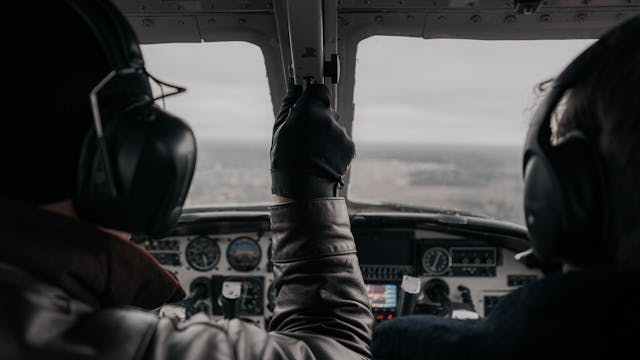Private plane ownership can be a thrilling experience, offering unparalleled convenience and freedom in travel. But it is a costly experience. In addition to the price of buying one, there are various regular expenses involved in owning and using a private aircraft. It is important to know about these costs before buying to be thoroughly ready for the burdens of private aviation. The following are six major costs involved in owning a private plane.
1. Original Purchase Price
The original price of buying a private aircraft is the largest investment. Based on the model, age, and status of the aircraft, the price varies from hundreds of thousands to millions of dollars. More advanced and newer jets will, of course, cost more. Also, consider the kind of plane you fly – a tiny, single-engine plane or one of the multi-engine jets – as this influences the cost extensively. Remember, the initial purchase cost is only a start. Also, include tax, registration, and initial equipping costs in your calculations.
2. Running Costs and Repair
Maintenance, as a constant expense, can’t be disregarded. Regular inspections and servicing are required to ensure the plane remains in safe operating condition. Depending on the aircraft, maintenance costs can be considerable, especially for older models. These costs cover everything from routine oil changes and tire replacements to more extensive repairs like engine overhauls.
It’s important to set aside funds for both scheduled and unscheduled maintenance. Parts and labor might be variable, and in certain situations, you may need to call on specialized technicians. Also, maintaining the plane in good health involves making sure you employ the right aviation oils and other specialized fluids to keep the engine running at its best.
3. Insurance Premiums
As with any valuable property, a private plane must be insured. Aircraft insurance rates depend on the plane type, purpose of use, and amount of coverage you select. Larger or more costly planes may have higher premiums. Insurance generally covers hull loss, liability, and injury to passengers, but supplementary coverage such as theft or natural disaster is usually available.
Insurance prices can be quite high, particularly if you fly extensively or internationally. It’s worth noting the conditions of your policy and making sure you are properly insured for both anticipated and unforeseen situations.
4. Fuel Expenses
Fuel is one of the biggest recurring costs for aircraft owners. Aircraft burn a lot of fuel per hour of flight, and fuel prices can vary depending on the international market. The cost of fuel will also vary based on the size and model of the aircraft that you own since larger aircraft use more fuel than smaller ones.
Long distance flights or flights at higher altitudes mean more fuel usage, hence more expenses. Also, airports usually have a payment for fueling services, meaning that using certain places to refuel might incur extra costs. Monitoring fuel usage closely and searching for the most economical refueling stations is the way to go when keeping this constant expense under control.
5. Hangar Fees
You need a place to park your private plane when it’s not being used. Hangar fees will depend on the airport you are using and the type of space you need for your hangar. Depending on the size of your plane, the hangar storage cost per month or year can be significant. Storage options vary from simple open-air tie-downs to enclosed hangars with air conditioning and security. The level of storage will affect the cost, with enclosed storage being higher but providing more protection for your plane.
6. Pilot and Crew Salaries
If you don’t intend to pilot the airplane yourself, you’ll have to hire a pilot or crew. Salaries for experienced pilots can be substantial, depending on the airframe and flight frequency. Crews and pilots who work full-time may also need some additional perks, like health benefits and retirement policies.
In addition, if you are flying abroad or require specialized operations, the expenses for support staff or specialized crew members might rise. Even when you decide to fly your airplane, you can still require a co-pilot or other employees for more lengthy or complicated flights.
Conclusion
Having a private aircraft is an expensive endeavor with many costs involved. From the original purchase cost to regular maintenance, insurance, fuel, hangar costs, and pilot salaries, it pays to budget for these to facilitate a seamless and efficient flying experience. Knowing the entire scope of costs can allow you to be in control of your investment and enjoy the privilege of private flying while keeping your financial expectations reasonable. By budgeting for anticipated and unforeseen expenses, you can keep owning a private plane a rewarding and enjoyable experience.
Add Business Connect magazine to your Google News feed



